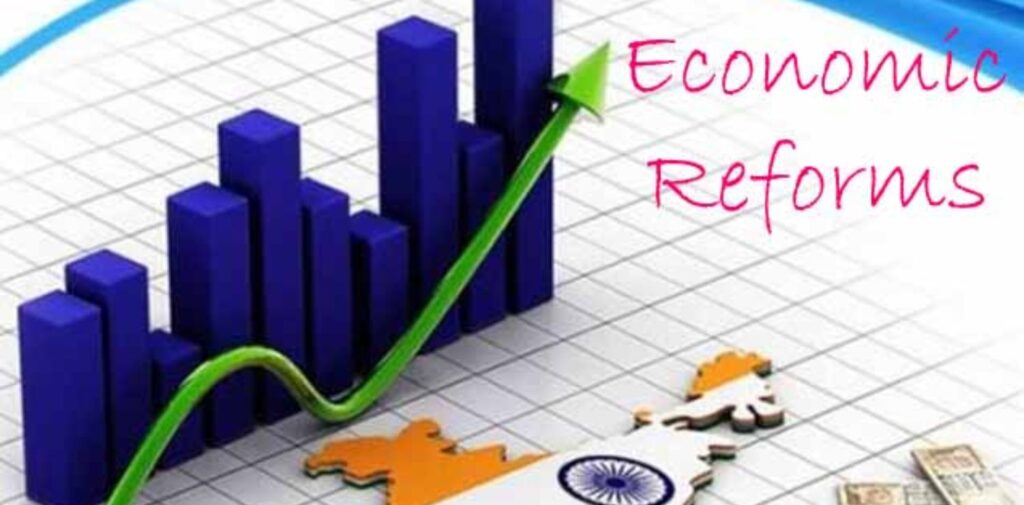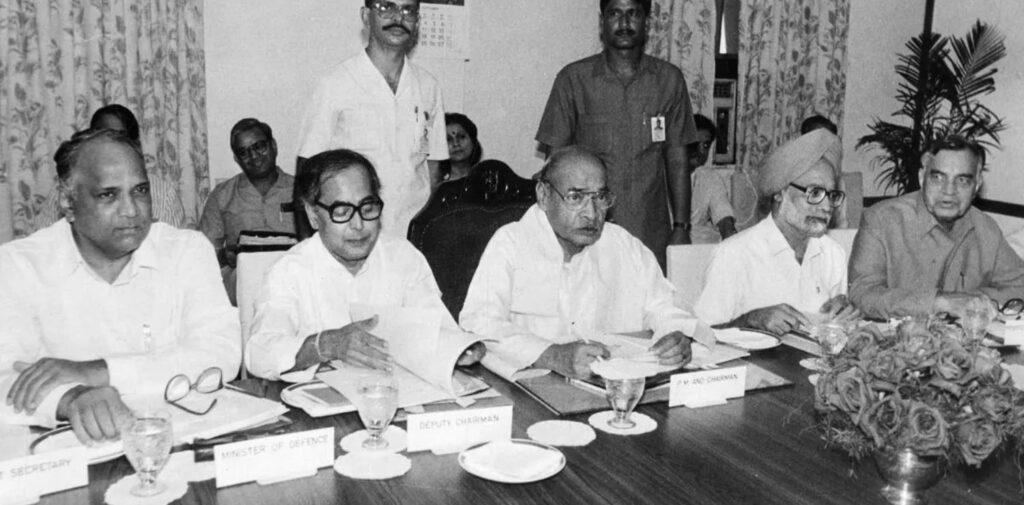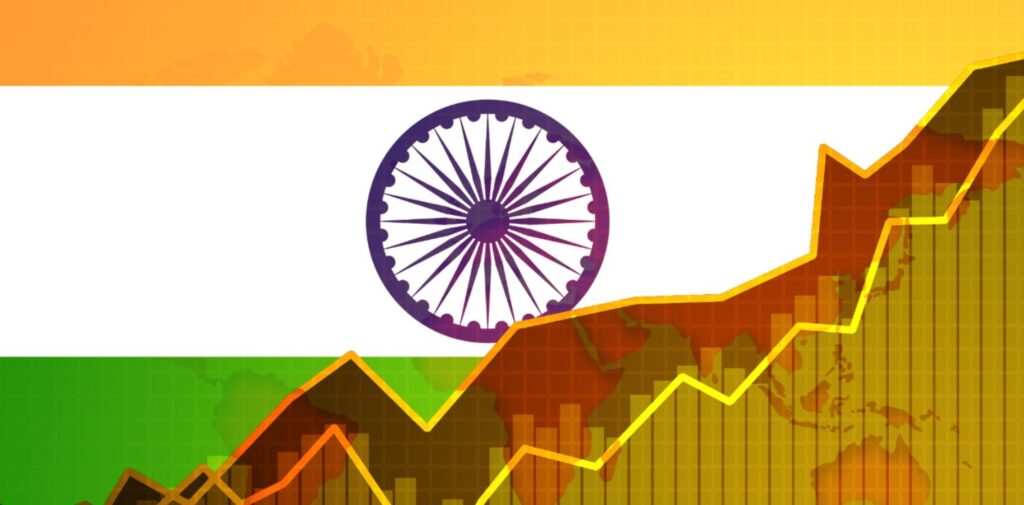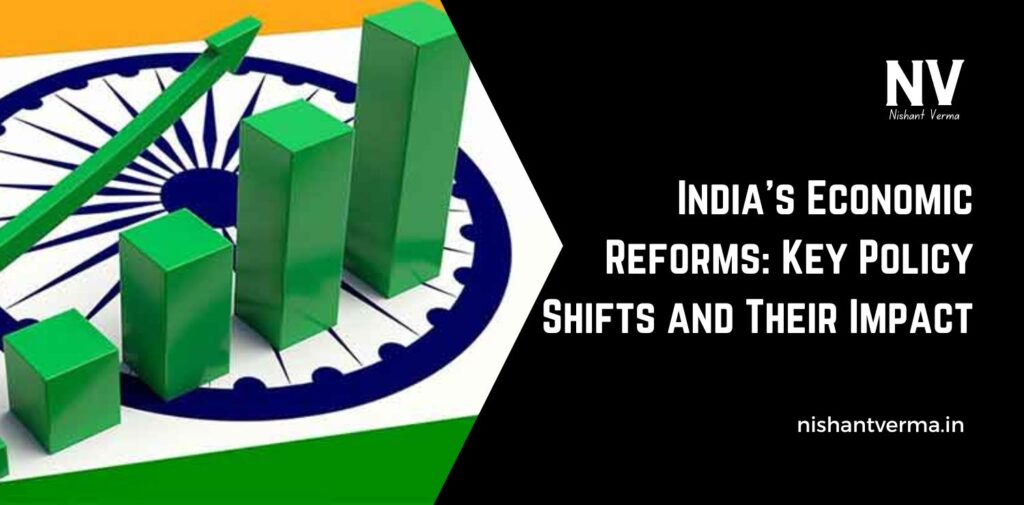India is one of the largest and fastest-growing economies in the world. Over the years, its economy has seen several important changes. Some of the most significant changes came in 1991, when India decided to take bold steps to improve its economy. These changes are known as economic reforms. These reforms were aimed at making the Indian economy more open, competitive, and efficient. In this article, we will explore the major India Economic Reforms, why they were needed, and how they changed India’s economy.
What Are Economic Reforms?
Economic reforms are changes or improvements made to a country’s economic policies to make the economy grow better. These changes can involve policies related to trade, industries, government spending, and even taxes. In 1991, India made big changes to its economy, which helped the country grow faster and become more integrated with the world. These reforms are often referred to as liberalization, privatization, and globalization.

The Crisis Before the Reforms
Before the reforms, India’s economy was struggling. In the 1980s, India had many problems. The country was spending more money than it earned, which led to a budget deficit. India’s foreign exchange reserves (the money it had saved from trade) were very low. This meant that the government had less money to pay for important things like food, medicines, and oil imports. By 1991, India was facing a serious financial crisis.
The country could not pay back its debts, and there was a risk of running out of money. The Indian government knew it had to take action to fix these problems and improve the economy. That’s when the government decided to introduce the economic reforms.
Key Economic Reforms of 1991
In 1991, India’s Finance Minister, Dr. Manmohan Singh, introduced major changes to the country’s economic policies. These changes were designed to open up the economy and make it more competitive. The main reforms were:
- Liberalization: Before 1991, India had strict laws that controlled industries and businesses. The government told companies what they could produce and how much they could sell. This made businesses less competitive and slowed down growth. Liberalization meant removing these restrictions and allowing businesses to operate freely. This allowed companies to compete with each other and become more efficient.
- Privatization: The government owned many businesses, like airlines, banks, and factories. These businesses were not doing very well because they were controlled by the government and not run efficiently. Privatization meant selling government-owned companies to private individuals or companies. This encouraged better management, better products, and increased competition.
- Globalization: India was a closed economy before 1991, meaning it did not trade much with other countries. Globalization allowed India to open its doors to the world. It meant that India could import goods and services from other countries and sell its own products abroad. This helped businesses in India grow and compete in the global market. It also made products cheaper and better quality for Indian consumers.
- Tax Reforms: Before 1991, taxes were high, and the system was complicated. This made it difficult for businesses to grow. In 1991, the government introduced new tax policies, which made it easier for businesses to pay taxes. The government also reduced tariffs on imported goods to make foreign products more affordable.
- Devaluation of the Rupee: In 1991, the Indian government decided to devalue the rupee (India’s currency). This meant that the value of the rupee was lowered compared to other currencies. While this made imports more expensive, it also made Indian exports cheaper. As a result, Indian products became more attractive to foreign buyers, and Indian companies started selling more abroad.

The Impact of Economic Reforms
The economic reforms of 1991 had a huge impact on India. These changes transformed the country’s economy, and today India is one of the fastest-growing economies in the world. Let’s look at the major impacts of these reforms:
- Faster Economic Growth: One of the most important results of the economic reforms was faster economic growth. Before 1991, India’s economy grew at an average rate of about 3-4% per year. After the reforms, the economy started growing at a much faster rate, averaging 6-7% per year. This growth helped India become one of the world’s largest economies.
- More Jobs and Opportunities: The reforms created many new job opportunities. As companies started to grow and compete in the global market, they needed more workers. This led to an increase in employment, especially in cities and in industries like technology, manufacturing, and services. The rise of information technology (IT) and software services also played a big role. Cities like Bangalore, Hyderabad, and Pune became known as global IT hubs. Many young Indians found jobs in these industries, which helped improve the standard of living for many families.
- Improvement in the Quality of Goods and Services: As India opened up to the world, consumers had access to better-quality goods and services. For example, foreign companies like Coca-Cola, Pepsi, and Toyota entered the Indian market, giving people more choices. This also pushed Indian companies to improve their products to compete with global brands. As a result, the quality of products available to the average person improved.
- Rise in Foreign Investment: Before the reforms, India did not attract much foreign investment. After the reforms, many foreign companies wanted to invest in India because of the country’s growing market and potential. This foreign investment helped Indian businesses grow, create more jobs, and improve technology and innovation.
- Increased Exports: After the reforms, India’s exports grew rapidly. The government’s decision to devalue the rupee made Indian products cheaper for foreign buyers, which increased the demand for Indian goods. Indian businesses began exporting more products like textiles, chemicals, machinery, and software.
- Improved Infrastructure: The economic reforms also helped improve infrastructure in India. As businesses grew and foreign investment increased, there was a need for better roads, airports, ports, and communication networks. The government and private companies started investing in improving these services, which helped boost the economy further.
- Challenges and Inequality: While the economic reforms brought many benefits, they also created some challenges. The benefits of economic growth were not equally shared. While some people became very rich, others, especially those in rural areas, did not see much improvement. Income inequality grew, and the poor and unskilled workers often did not benefit as much from the reforms.
In addition, the reforms led to the growth of the private sector, but the public sector (government-owned businesses) sometimes lagged behind in terms of productivity and innovation. This created challenges in providing equal opportunities for all Indians.

Conclusion: India economic reforms
India economic reforms of 1991 were a turning point in the country’s history. They transformed the economy, leading to faster growth, more jobs, and better products for the people. The decision to open up the economy, privatize industries, and encourage foreign investment helped India become one of the largest economies in the world.
However, the reforms also highlighted the need for policies that ensure everyone benefits from economic growth. While some people became wealthier, others continued to struggle with poverty. Therefore, it is important for India to continue its reforms and ensure that the benefits of growth reach every part of society.
The economic reforms of 1991 laid the foundation for a stronger, more competitive India. They taught the country valuable lessons about the importance of openness, innovation, and the need for equal opportunities for all.




